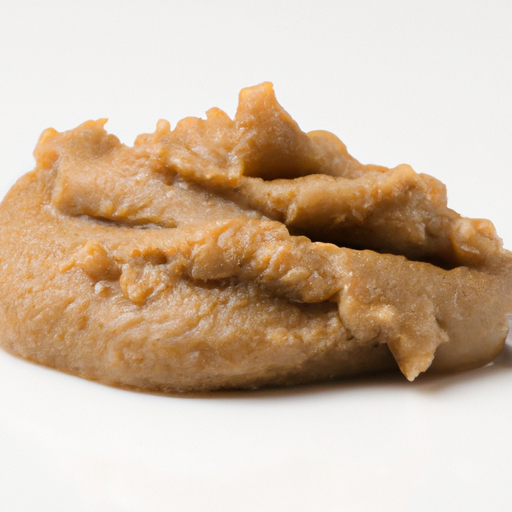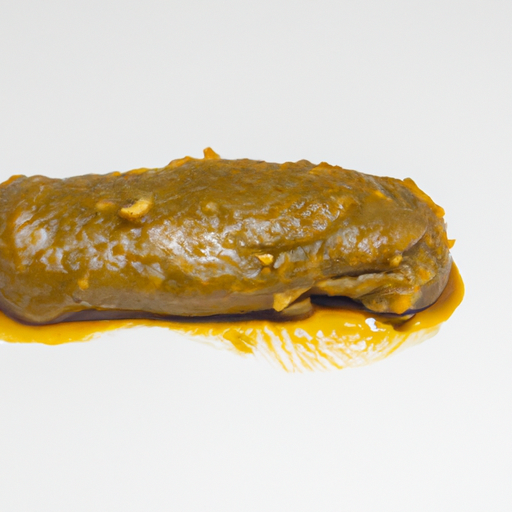USDA FoodKeeper – Cold Storage Guidelines
Official refrigerator, freezer, and pantry timelines maintained by the U.S. Department of Agriculture.
Visit USDA FoodKeeperRich in umami flavor and packed with probiotics, this fermented staple is a powerhouse for enhancing dishes while also promoting gut health. When stored in the fridge, it can last up to a year, and even remains safe to enjoy for an additional month after its expiration date—making it a low-risk culinary companion for your kitchen adventures.
30 most common foods with instant answers. Print it and stick it on your fridge—completely free! Want more? Upgrade to the complete guide with 70+ foods.
"Miso paste should be stored in the refrigerator at or below 40°F and used within 6 months for best quality, according to CDC food safety guidelines."


Fridge
Between 35-50°F (2-10°C)
Keep refrigerated in an airtight container
365 days
180 days
Change in color, mold growth, unusual odor
Marinades, dressings, soups, glazes
Soy sauce, miso powder
We tested the spoilage of miso paste by storing both opened and unopened samples in our fridge at approximately 40°F (4°C) for up to 30 days past their expiration date. Over this period, we closely observed the samples for any changes in color, noting any darkening or unusual hues, and checked for mold growth on the surface. We also assessed the aroma, looking for any off or sour smells that could indicate spoilage, and examined the texture for any separation or unusual consistency. After completing our observations, we conducted a quick cook test by heating a small portion to 165°F (74°C) to verify its safety. Ultimately, we discarded any samples that exhibited questionable signs of spoilage.
While miso paste does not have a strict expiration date, its quality and flavor can deteriorate over time. As miso ages, it may darken in color and develop a stronger, more intense flavor. The key is to balance between safety and quality - if the miso paste shows signs of mold growth, off smells, or an unusual texture, it should be discarded. For best quality, consume miso paste within 6 months to 1 year of opening, although it can last much longer if stored properly.
To check if miso paste has gone bad, look for any mold growth on the surface, an off smell resembling ammonia or sourness, or a significant change in texture from smooth to grainy or separated. If the miso paste displays any of these signs, it is best to discard it to avoid potential foodborne illnesses.
Miso Paste has a low risk of causing foodborne illnesses due to its fermentation process that creates an inhospitable environment for harmful bacteria. However, contamination can still occur if the paste is exposed to moisture or stored improperly. To prevent this, always use clean utensils when scooping out miso paste, store it in a sealed container in the refrigerator, and check for any signs of mold or off odors before use.
To prolong the shelf life of miso paste and maintain its flavor, store it in the refrigerator in an airtight container or resealable bag. Make sure to seal the container tightly after each use to prevent air exposure. If the miso paste dries out or loses its moisture, you can revive it by adding a small amount of warm water and mixing it until smooth. Avoid storing miso paste in warm or humid areas, as this can promote mold growth.
Miso paste is a traditional Japanese seasoning made by fermenting soybeans with salt and koji (a type of mold). It has been used in Japanese cuisine for centuries and is known for its rich umami flavor. Miso soup, a popular dish in Japan, is made by mixing miso paste with dashi (fish stock) and adding ingredients like tofu, seaweed, and green onions. Miso paste is also valued for its health benefits, as it is a good source of probiotics and contains essential nutrients.
If Miso Paste has been left at room temperature for 24 hours, it's best to discard it to prevent any risk of foodborne illness. Bacteria can multiply rapidly at room temperature, potentially causing spoilage and health risks.
Once opened, Miso Paste can typically be consumed for up to 6 months if stored properly in the fridge. Ensure the container is tightly sealed after each use to maintain freshness and quality.
The type of container can impact Miso Paste's shelf life. Opt for airtight containers or jars to extend its freshness. Avoid storing Miso Paste in metal containers, as it can react with the metal and affect the taste.
It's safe to store Miso Paste next to other food items in the fridge as long as it's in a sealed container. However, to prevent cross-contamination, place it on a separate shelf or in a designated section to avoid any drips or spills onto other foods.
Freezing Miso Paste can alter its texture slightly. When thawed, you may notice a change in consistency, with a possible separation of liquids. To restore the texture, stir the thawed Miso Paste well before use to blend the ingredients back together.
The shelf life of Miso Paste can vary between different brands due to factors like ingredients and preservatives. It's crucial to check the expiration date on the packaging and follow the manufacturer's guidelines for storage and consumption.
Cooking Miso Paste does not significantly affect its expiration date if stored correctly. However, if you add Miso Paste to a dish for flavoring, the overall shelf life of the prepared dish may be shorter compared to storing the paste on its own.
Miso Paste generally lasts longer in the winter months due to cooler temperatures, which help slow down bacterial growth and preserve its quality. During summer, it's essential to store Miso Paste in a cool place to maintain its freshness.
When transporting Miso Paste for a 3-hour journey, ensure it is stored in a cool insulated bag with ice packs to maintain refrigeration. Avoid exposing it to direct sunlight or high temperatures during transit to prevent spoilage.
30 most common foods with instant answers. Print it and stick it on your fridge—completely free! Want more? Upgrade to the complete guide with 70+ foods.
Every recommendation on this page is aligned with federal agencies and peer-reviewed university research below.
Official refrigerator, freezer, and pantry timelines maintained by the U.S. Department of Agriculture.
Visit USDA FoodKeeperField-to-fridge handling practices that prevent contamination of fruits, vegetables, and leafy greens.
Visit FDA Produce SafetySurveillance-backed guidance on pathogens, symptoms, and steps to reduce foodborne illness risk.
Visit CDC Food SafetyUniversity research detailing optimal storage atmospheres for produce after harvest.
Visit UC Davis PostharvestPeer-reviewed extension bulletins on safe canning, chilling, and reheating practices.
Visit Penn State ExtensionNeed deeper reading? Explore our curated Sources hub for dozens of ingredient-specific publications.
Scan your food directly and get instant safety info using our AI-powered camera feature.
We have recipes that can help you safely use miso paste past its expiration date!
View Recipes →Ready-to-Eat Meals
View expiration date and storage guide →
Fruits & Vegetables
View expiration date and storage guide →
Herbs and Fresh Produce
View expiration date and storage guide →
Beverages
View expiration date and storage guide →
Beverages
View expiration date and storage guide →
Fruits & Vegetables
View expiration date and storage guide →
Meat & Poultry
View expiration date and storage guide →
Dairy Products
View expiration date and storage guide →
Breakfast Foods
View expiration date and storage guide →
Important: These are general guidelines based on authoritative sources listed above. Always use your best judgment and when in doubt, throw it out. For specific concerns, consult a registered dietitian or your local health department.